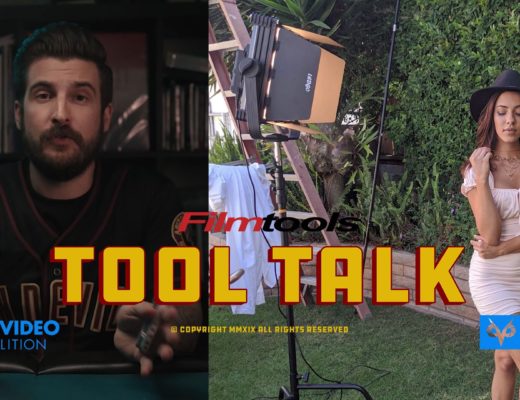Barry Andersson has written for PVC before, as well as putting on a few webinars, and now he is taking his training expertise on the road. Barry’s Practical Filmmaking Tour is bringing two-day immersive workshops (there are ticket options to attend for less time if your schedule doesn’t allow two full days) to cities around the United States and Canada. Barry started his tour last month, but there are still plenty of stops left before the tour wraps up.
Below is an excerpt from Barry on his seven steps to light a scene. Be sure to check out Barry’s tour when it comes to your city for many more tips like these. Don’t forget to use the code “pft25” when you check out to get 25% off your admission!
We all have different approaches for how we light a scene – from what lights we use to what lenses we choose; and from where we place talent to where we place the camera. We determine the elements and variables in each location. It is because of the changing nature of our shoots that I like to ensure some consistency from shoot to shoot by following a process to approaching my lighting setups.
Here are the 7 steps I go through, from when I first enter a location to the final shot.

1. Walk the entire room/space and choose which way you will point the camera for your shot.
And I mean walk the entire space. I will literally walk the entire room and make sure that I view the space from all angles. More than once, I’ve found a unique angle that I would not have found if I just stopped and scanned the room to choose where I wanted to point the camera.

2. Turn off all available lights (that you control).
I always turn on (then off) all the lights that I can control in the space. The reason I do this, is I want to start with a blank canvas. After I place my lights, then I can play around with turning on all, some or part of the existing lights. I want to create the lighting rather than augment and document the existing lighting.

3. Make sure to turn off lights in other rooms that may still be spilling into your scene.
This is a step a lot of people miss. There have been many times I spot a reflection, spill or something I don’t like in the scene I am lighting only find out later that the offending issue is coming from another room, hallway or window that I didn’t check before I got started. Make sure to do a sweep of your location and check all points of light entry to turn all light off or block/control it in some way. This ensures you have a blank canvas to start with.

4. Set your key light
Now that you have a blank canvas, you can start to work. Choose where to place your key light and go from there. A lot of the hard work is done at this point.

5. Set your fill and edge/back lights.
Not every set-up will require a fill or back light, but for those cases that do, you then need to decide what type you’d like to use. There are times when I want fill but not a fixture. I love bouncing fill light onto my subjects whenever possible.

6. Turn on any existing lights you might want to play in the scene.
Once you are done lighting your main talent, play with turning on and off the house lights again to determine if you want to let anything play in the scene. I often find this is the “secret sauce” to really make the whole scene come together.

7. Find that little extra something that finishes the scene.
If you dig deep to unearth everything you can control, you can often miss something. I always take one more look around when I am done lighting before I shoot to see if there is anything I can do to make the final shot even better. I’ve found lights under cabinets, a huge stained glass window behind a door I opened that was in the frame and many other “happy accidents” that bring my scene to life by taking a few extra moments and pushing myself to find something small to make the shot even better.
Every room you have to light and every location you shoot will be a little different. Add those variables to the fact that what you’re tasked with capturing will always be changing. The steps described above are the process that I go through on each shoot to cover my bases, and then I spend that little extra time finding or placing a light, prop or something to make the scene just a little better. Fight to make your shot stand out and set it apart from what they would have gotten had they hired someone else. It’s creating beautiful images that keep us employed, but showing your client you can make magic leads to future jobs. Next time try following these steps and see how they work for you.
You can find more info on Barry Andersson at his website. Barry’s Practical Filmmaking Tour still has eight more destinations left, including a stop in Los Angeles at the Moviola Training Center on November 16th and 17th. Make sure to sign up today using the promo code “pft25” to get 25% off any ticket purchase before they’re sold out!

Filmtools
Filmmakers go-to destination for pre-production, production & post production equipment!
Shop Now














